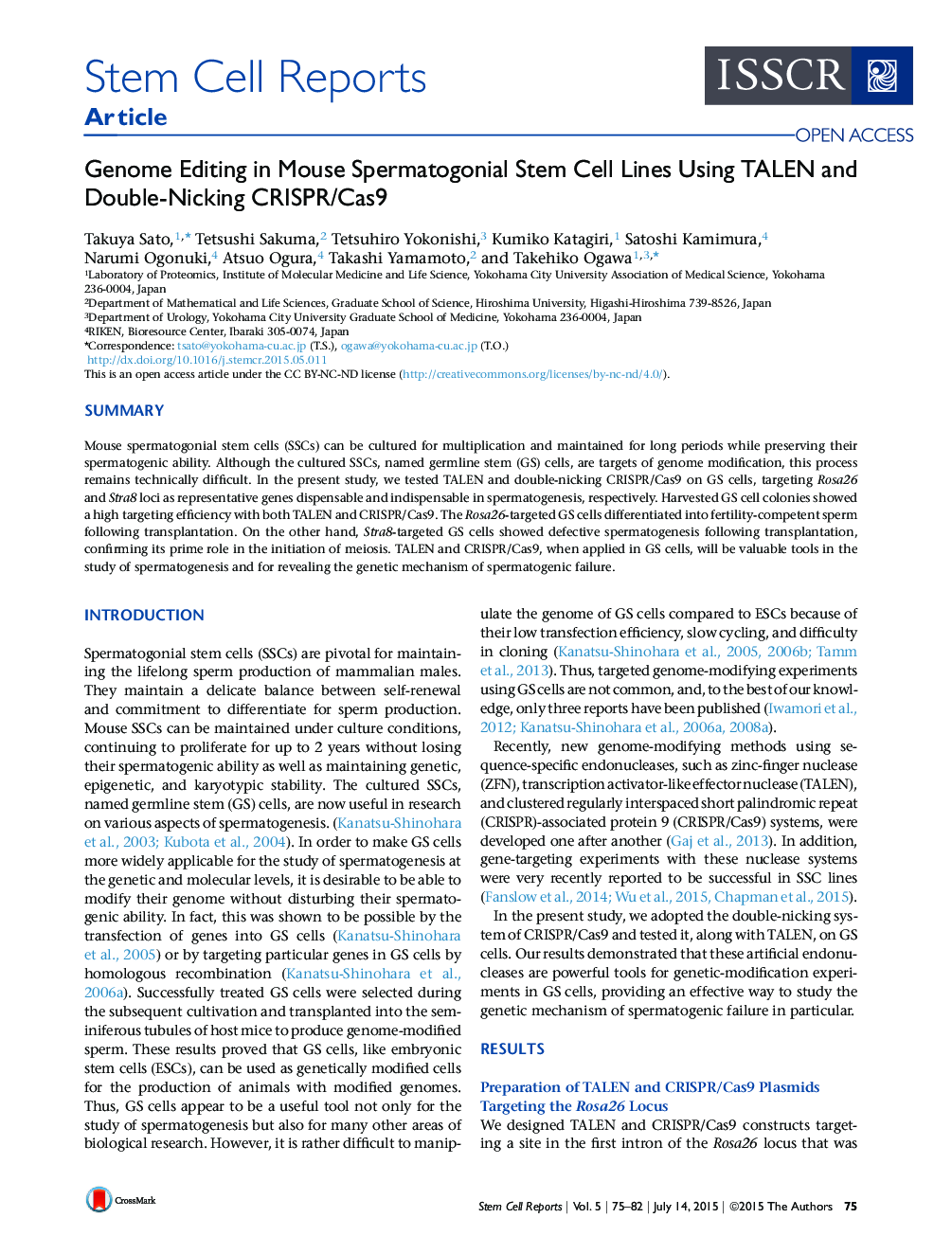| Article ID | Journal | Published Year | Pages | File Type |
|---|---|---|---|---|
| 2093495 | Stem Cell Reports | 2015 | 8 Pages |
•Genome editing in GS cells is available by TALEN and double-nicking CRISPR/Cas9•Targeting accuracy and specificity are nearly 100% in drug-selected clones•The genome-editing procedure itself does not disturb the spermatogenic ability of GS cells•Genome modification in GS cells provides a tool in the study of spermatogenesis
SummaryMouse spermatogonial stem cells (SSCs) can be cultured for multiplication and maintained for long periods while preserving their spermatogenic ability. Although the cultured SSCs, named germline stem (GS) cells, are targets of genome modification, this process remains technically difficult. In the present study, we tested TALEN and double-nicking CRISPR/Cas9 on GS cells, targeting Rosa26 and Stra8 loci as representative genes dispensable and indispensable in spermatogenesis, respectively. Harvested GS cell colonies showed a high targeting efficiency with both TALEN and CRISPR/Cas9. The Rosa26-targeted GS cells differentiated into fertility-competent sperm following transplantation. On the other hand, Stra8-targeted GS cells showed defective spermatogenesis following transplantation, confirming its prime role in the initiation of meiosis. TALEN and CRISPR/Cas9, when applied in GS cells, will be valuable tools in the study of spermatogenesis and for revealing the genetic mechanism of spermatogenic failure.
